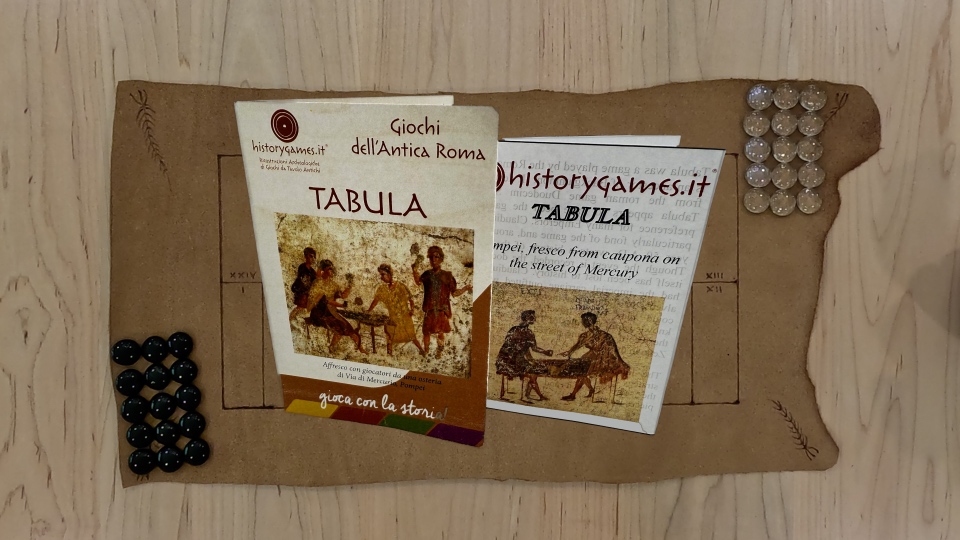HeroQuest
Join us for a high level walk through on how to play HeroQuest along with our Purpose Circus review! We play the updated version released by Avalon Hill and Hasbro taking out goblins and orcs along the way.
The original version of HeroQuest was designed in the late 1980s by Milton Bradley and Games Workshop with a North American release in 1990. The game did very well, with multiple expansions that included additional quests, heroes, monsters and game features. It faded from popularity within the same decade, and ownership of the intellectual property changed hands multiple times. In 2020 Hasbro acquired the rights, and through a crowdfunded campaign raised over $1,000,000 inside of 24 hours to update and re-release the game.
Hasbro HeroQuest (External Link)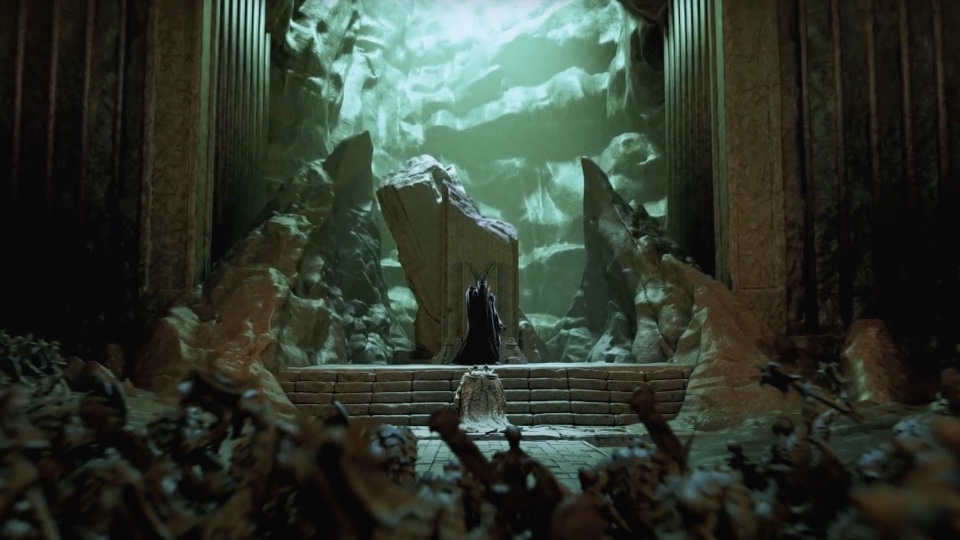
The game smashes together the Role Playing Game (RPG) concept of Race (e.g. Human, Elf, Dwarf) and Class (e.g. Fighter, Wizard). This is similar to the original Dungeons & Dragons and keeps things simple. Quests are intended to be short, so heroes do not naturally regain health or cast spells until they return to town. The Barbarian and Wizard are the most straightforward. The Elf is a combination of the two. The Dwarf is like a slightly weakened Barbarian with a skill to disarm traps that is only useful outside of combat.
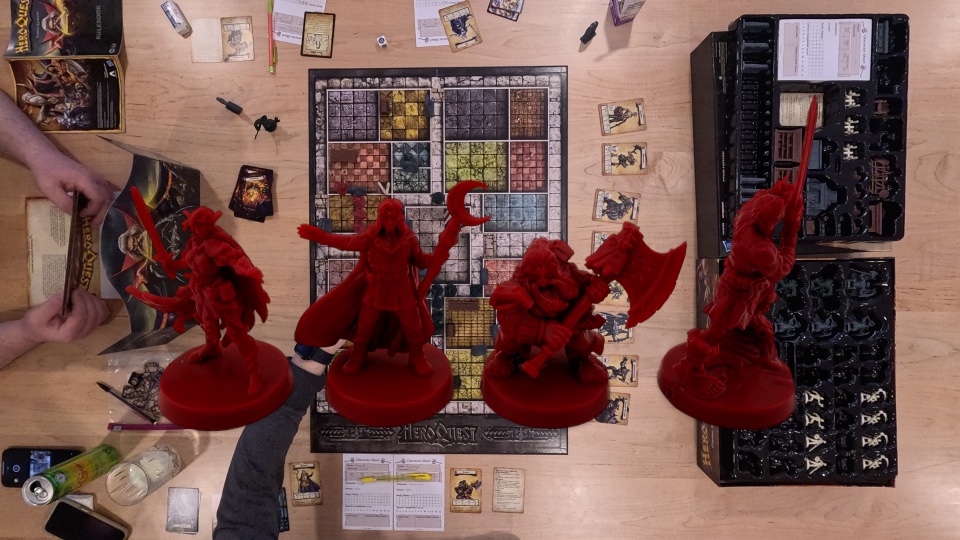
Like with Dungeons & Dragons, one person must play the role of Game Master. This is equivalent to a D&D Dungeon Master. While a D&D Dungeon Master Guide and Player's Handbook are each close to 400 pages, the HeroQuest rulebook is only 20 pages. This makes things easy to pick up, but the lack of complexity can make long-running campaigns a bit repetitive for those who have tasted more sophisticated systems. The core game features 8 different monsters along with a wildcard figure used for multiple purposes depending on the quest.
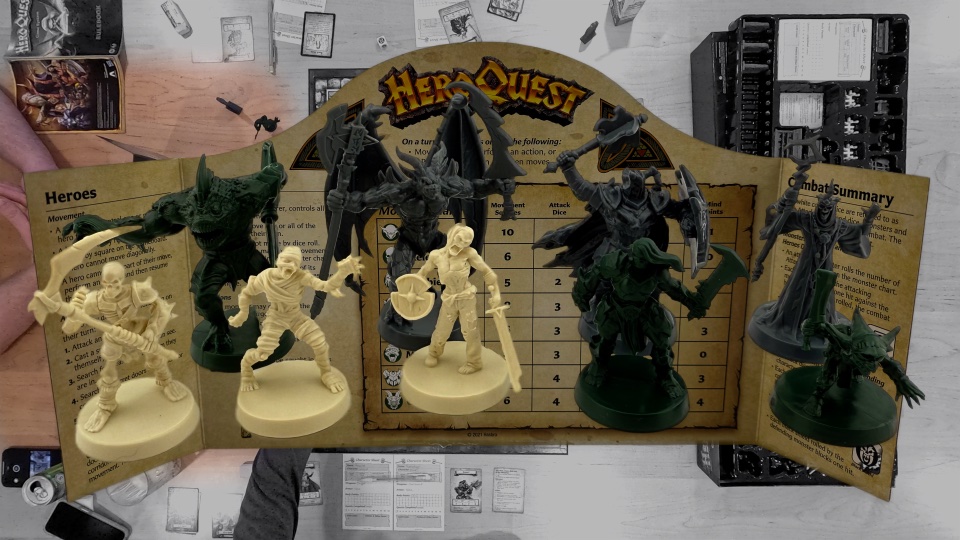
A single gameboard is repurposed from quest to quest to keep the costs and complexity down. Certain rooms and corridors may be blocked off from one adventure to the next, but the general layout remains the same in the 14 quests included with the game. Some expansions have overlays to mix things up. Many people build custom adventures and boards that go a long way towards keeping things fresh.
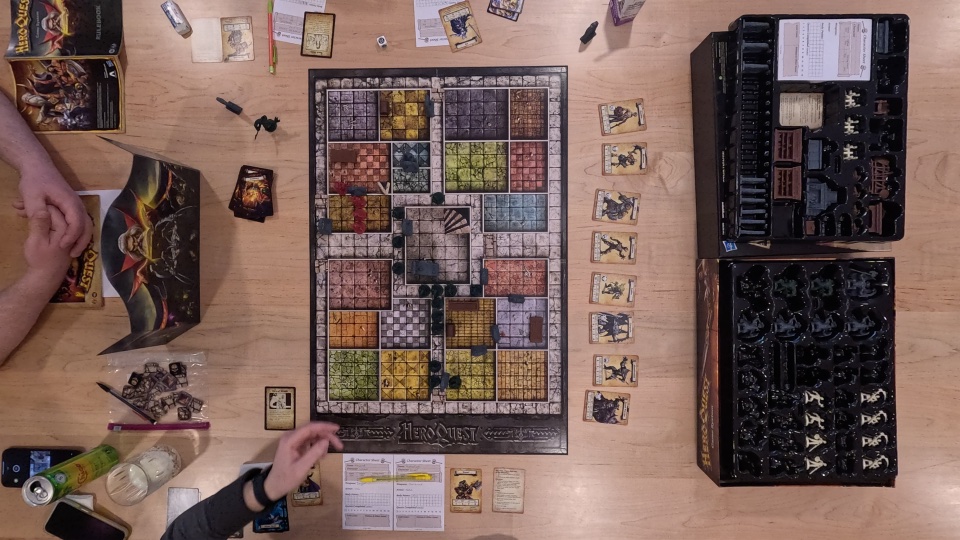
The quest book visible only to the game master contains the map layout for each quest, including the locations of doors, furniture, treasure and monsters. There is also an accompanying introduction that is read to the heroes at the beginning of the quest which includes the core objective(s).
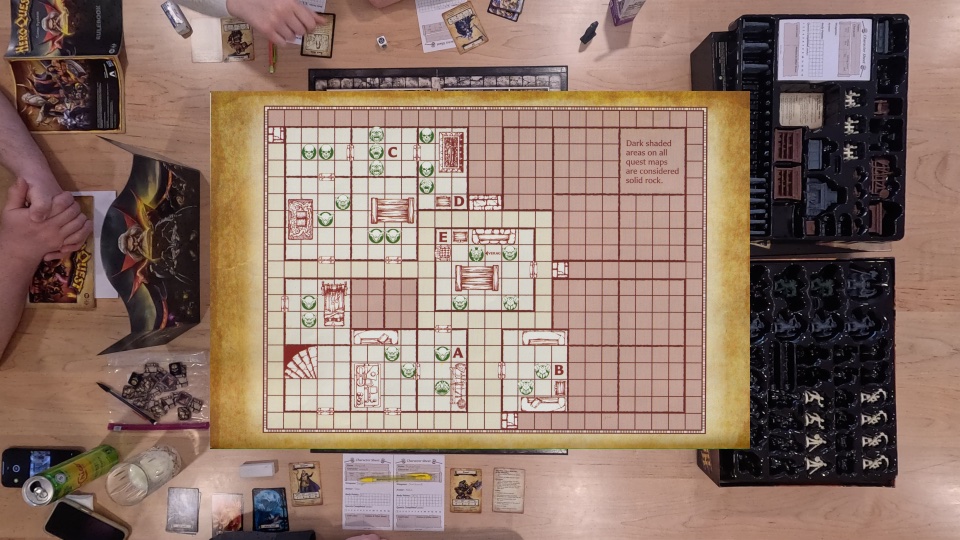
Both monsters and heroes have a number of dice they use for attack and defense. These differ from character to character and can be modified by both equipment and spells. HeroQuest uses unique 6-sided combat dice that each feature 3 skulls, 2 white shields and 1 black shield. When attacking, each rolled skull indicate a hit. When defending, the heroes hope for white shields and monsters require a black shield to negate a hit. For each undefended hit a body point is lost. These combat mechanics are simple, but easy to understand.
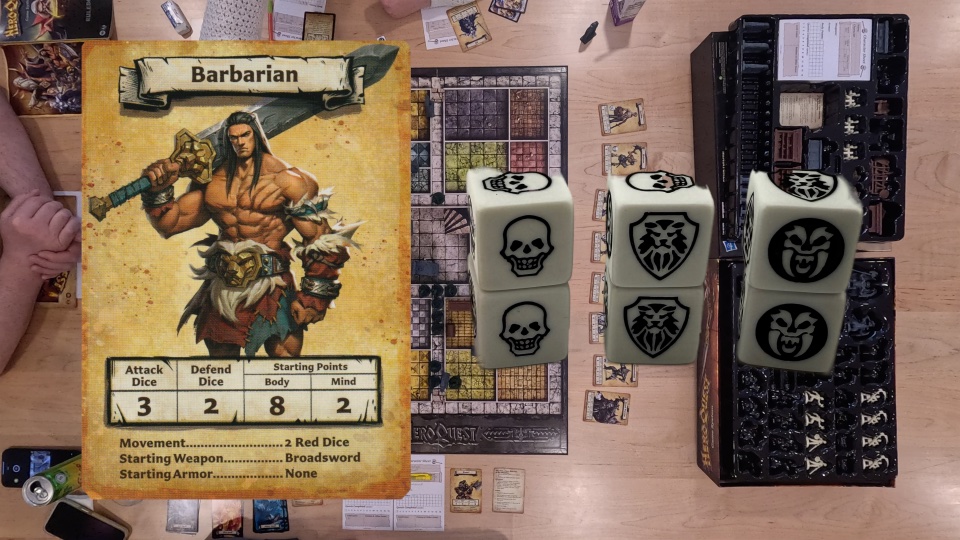
During the adventure, heroes can search rooms for treasure. Quests may have a predefined treasure in the quest book, but more likely than not the hero will draw from the treasure card pile. This deck features not only gold and potions, but also damaging hazards and wandering monsters. Artifacts are powerful pieces of equipment that are always defined in the quests. Equipment can be purchased between quests if the hero has sufficient gold.
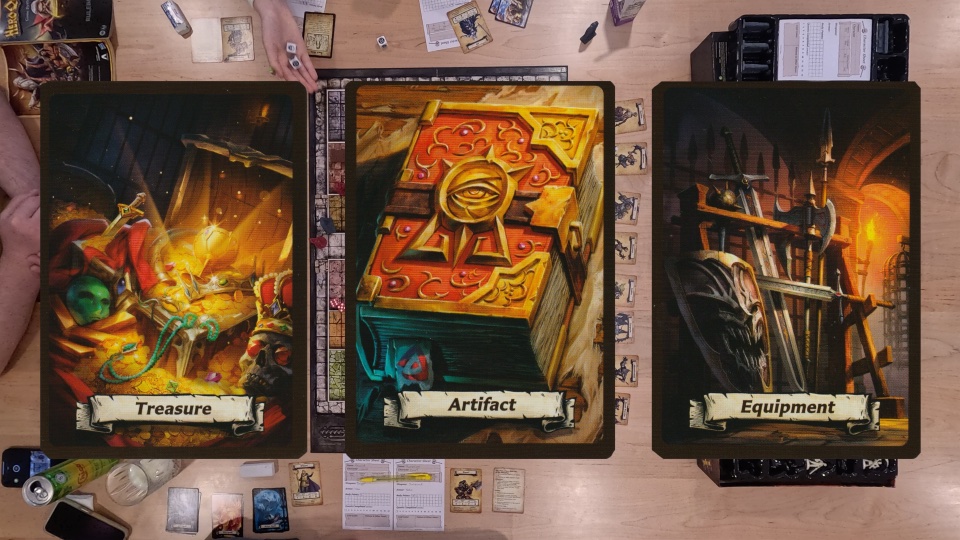
Players receives a character sheet for each character they control to track treasure, equipment, hit points and other things that change throughout the campaign. As heroes gain more stuff they become more powerful and the quests may become too easy. In these cases, the game master should introduce additional challenges such as extra monsters, or variants of monsters with enhanced abilities.

Players don't have to read a 300-400 page handbook to get going, as movement and actions are all contained on a single sided card. Most other actions are considered freebies during their turn, or up to the game master if the game balance is threatened. Quest challenges were designed assuming four heroes, so with less than five people some players will need to control more than one hero.
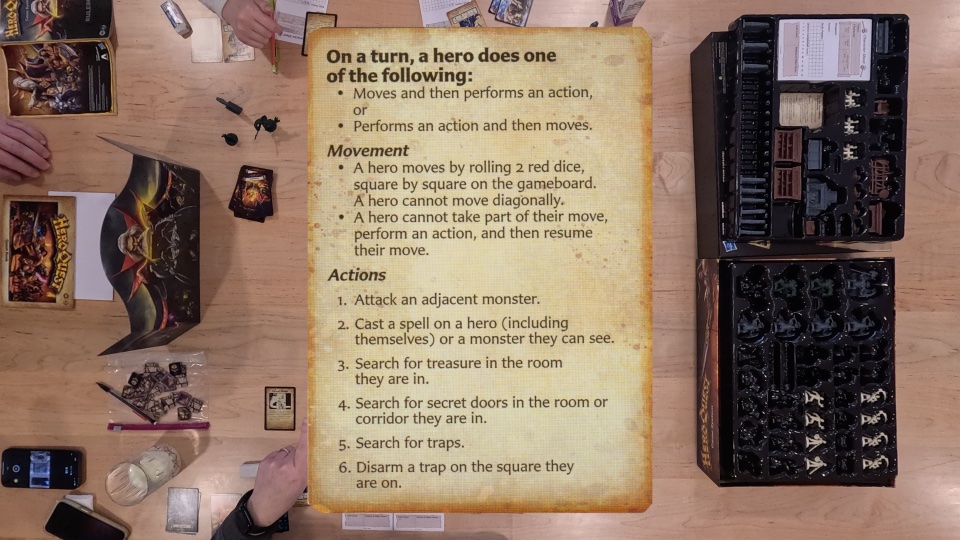
Purpose Circus Game Rating
Inclusivity: ★ ★ ★ ☆ ☆
Number of simultaneous players and learning curve for new players.
- Up to 5 players with prebuilt quests.
- Game Master must read rules and quest(s) in advance.
Amusement: ★ ★ ★ ★ ☆
Player engagement with game and others - collective laughter.
- Heroes must work together to survive.
- Different personalities can lead to friction.
Quality: ★ ★ ★ ★ ★
Play efficiency and game fit/finish.
- Solid miniatures are beautiful.
- Game pieces deployed as players progress.
Replayability: ★ ★ ★ ★ ★
Gameplay variety, challenges and permutations of experience.
- 14 included quests with multiple expansions available.
- Game system open-ended for custom built campaigns.
Intangibles: ★ ★ ★ ★ ☆
Innovation and nostalgia - the magic.
- A wonderful balance between role playing and board games.
- Improved re-release of late 1980s classic.
Overall: ★ ★ ★ ★ ☆
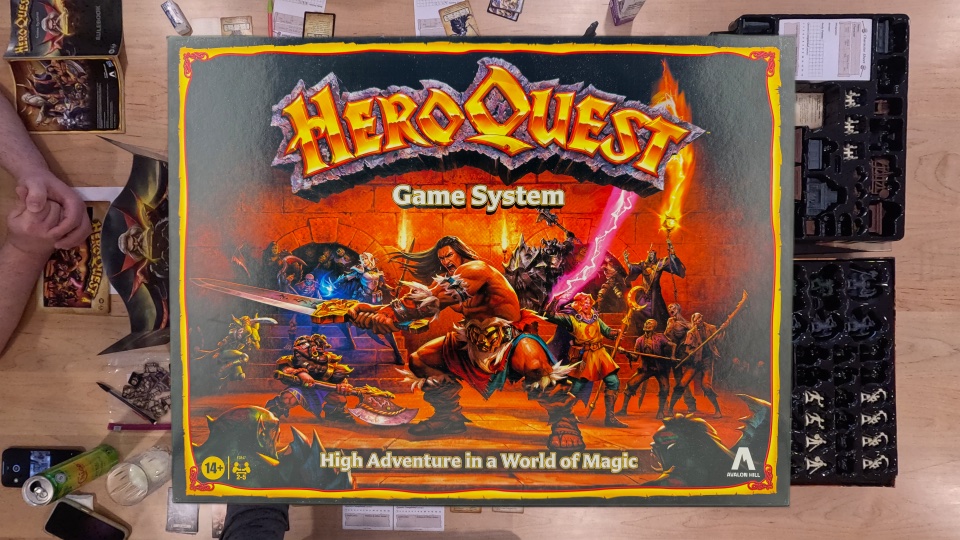
Many people are hesitant to play D&D because of the upfront commitment reading manuals, studying handbooks and building characters. HeroQuest offers a lightweight version that is easy to get into with 1-2 hour quests and simple game mechanics. While the static board places constraints that sometimes feel limiting, setup is a breeze and floating pieces would either cheapen the feel or further drive up costs (depending on quality). Even D&D players can enjoy a game of HeroQuest when their DM is unavailable or a simple/short adventure fits the evening better than rolling out the big campaign. We have had a blast jumping into the re-release driven by fans. We look forward to completing the core adventures and getting into the expansions! Leave a comment on our YouTube channel if you either remember playing the original or have jumped into the new version. Thanks, and happy dungeon crawling!
Copyright © 2024 - 2025 Purpose Circus


